Agile frameworks are designed to function along the boundary of Complex and
Complicated.
The word “Cynefin”, pronounced ki–neh-vin, is a Welsh word that cannot be directly translated into English. However, it is commonly translated as ‘habitat’ or ‘place’ and means a place of multiple belongings. It explains about ‘Who we are’. We are all rooted in many different pasts which profoundly influence who we are, but of which we are only partially aware. i.e. geographic, tribal, religious, cultural, etc.
Cynefin was first developed by Dave Snowden in 1999 in the context of knowledge management and organisational strategy. Cynefin is a decision framework that recognizes the causal differences that exist between different types of systems, proposing new approaches to decision making in complex social environments.
Cynefin is a sense-making model, not a categorization model. In a categorization model, the framework precedes the data. This is good for exploitation but not exploration. In a sense-making model the data precedes the framework, making it good for exploration.
Types of systems involved in Cynefin are; (Relating to Gaming Analogy)
Complicated — Chess (about expertise to analyze and Predicting)
Complex – Poker (game about learning)
Chaotic —
Disorder
Simple Domain:
In the simple domain we are in an ordered system where the relationship between cause and effect exists, is predictable in advance and is self evident or obvious to any reasonable person.
We apply best practices and the approach is to:-
SENSE — CATEGORISE — RESPOND
Sense – See what’s coming in
Categorize – Make it fit predetermined categories
Respond – Decide what to do
Complicated Domain
In the complicated domain we have an ordered system where there is a right answer and where a relationship does exist between cause and effect, however, the answer is not self-evident and requires analysis and/or the application of expert knowledge. There can be several different ways of doing things in this domain, with the right expertise.
We apply good practice and the approach is to:-
SENSE — ANALYSE — RESPOND
Sense – See what’s coming in
Analyse – Investigate or analyse, using expert knowledge
Respond – Decide what to do
Complex Domain
In the complex domain we have unorder where the relationship between cause and effect can only be perceived in retrospect and the results are unpredictable.
Complex systems are therefore dispositional and not causal. Here, we need to create safe to fail experiments and not attempt to create fail safe design. We cannot solve complex problems with best or good practices alone. While conducting safe to fail experiments, we must dampen the parts that fail and amplify the parts that succeed. In this domain we get emergent order and practice that is often unique.
Emergent practice, behavior or order results and the approach is to:-
PROBE — SENSE — RESPOND
Probe – Experimental input
Sense – Failures or successes
Respond – Decide what to do ie. amplify or dampen
Chaotic Domain
In the chaotic domain no cause and effect relationship can be determined. We have to stabilize the position very quickly!
We discover novel practice and the approach is to:-
ACT — SENSE — RESPOND
Act – Attempt to stabilize
Sense – Failures or successes
Respond – Decide what to do next
Domain Of Disorder
This domain includes the state of not knowing what type of causality exists or what space you are in.
We don’t know which of the domain we are in. The problem here is that we interpret and assess the situation we are in based on our personal preference for action, reverting to our own comfort zones.
We did the workshop on decision making model of Cynefin, A key element of achieving goal is planning. To plan better we did the workshop on how decision making relates to Agile planning principles and practices using Cynefin Model. Here are some pictures from the workshop.
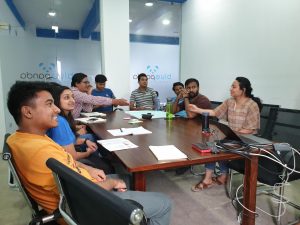
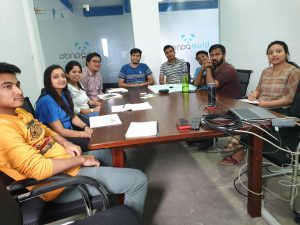
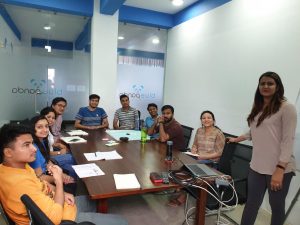

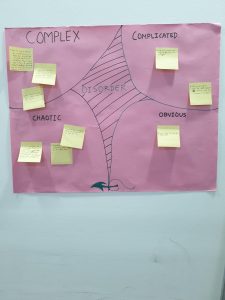
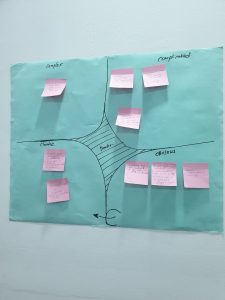
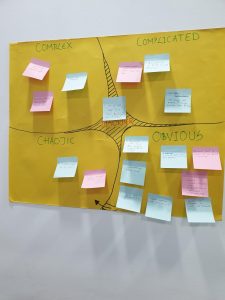
![]()
 Simple – tic tac toe
Simple – tic tac toe